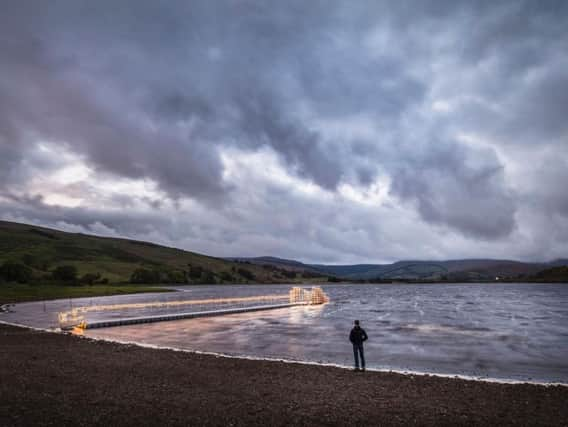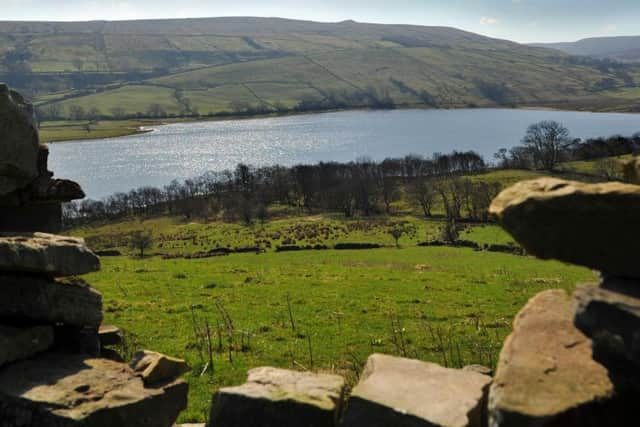Yorkshire's own Atlantis: The legend of the underwater town of Semerwater


But while legend of a submerged town might sound like something from make-believe, sometimes tall tales lay a little closer to home than you may think and you don't have to delve into story books or far-fetched movies to find them.
Lake Semerwater
Located in the heart of the picturesque valley of Raydale, on the southern side of the rolling hills of Wensleydale, lies the glittering waters of Lake Semerwater.


Advertisement
Hide AdAdvertisement
Hide AdThe body of water was formed at the end of the last Ice Age when huge amounts of glacial debris caused the valley to flood, making it the second largest natural lake in North Yorkshire at half a mile in length and stretching across 100 acres.
It occupies a quiet, secluded spot, surrounded only by miles of unspoilt countryside, making it somewhat of a hidden gem among the Dales and is such a sight to behold that it has caught the eye of many artists over the years, the most famous being J. M. W. Turner who used the lake as a subject for many paintings and sketches.
The lake has long been a popular beauty spot thanks to its great variety of wildlife and water sports potential, but perhaps its most famous for the mysterious legend that surrounds its history.
The legend of the lost town


As one of only two natural lakes left in the Yorkshire Dales, the origin of its creation has been riddled by mystery and curious tales.
Advertisement
Hide AdAdvertisement
Hide AdOne story claims that the huge stones on the foreshore arrived there from nearby Addleborough crag, following a fearsome battle between the devil and a giant, but the most famous folktale is that of the drowned cursed village.
According to legend, Semerwater was once a thriving and prosperous town which was home to many inhabitants.
One night the town was visited by a poor old beggar who wandered the streets in search of food, drink and shelter, only to be shunned by the locals and shown no kindness.
The man is said to have moved methodically from door to door in the hope someone in the town would take pity on him and come to his aid, but the wealthy townsfolk had little compassion and at each house he was turned away.
Advertisement
Hide AdAdvertisement
Hide AdAfter searching in vain, his journey eventually led him to the outskirts of the town where he happened upon the cottage of elderly shepherd and his wife who took him and treated him with great kindness, providing him with both food and a place to rest after his weary travels.
In the morning as he prepared to leave, he was so overcome by the lack of human kindness he had experienced on his visit that he unleashed a curse upon Semerwater and all who lived there.
Turning to face the town with his arms uplifted, her uttered:
"Semerwater rise, and Semerwater sink, and swallow the town all save this house, where they gave me food and drink."
Advertisement
Hide AdAdvertisement
Hide AdImmediately after the curse was uttered the waters of the lake rose up, flooding the town and drowning all its inhabitants, leaving only the kindly couple and their humble home unscathed.
A lesson in kindness
In some versions of the story, it is believed the old beggar was actually an angel who came to the town dressed in rags as a disguise.
It is believed after uttering the curse, the man transformed into a beautiful and bright angel, revealing his true self to the couple who had shown him great goodwill.
The tale has been likened to familiar biblical stories, including Noah's Ark and Sodom and Gomorrah, and is thought of as a great story in the importance of kindness.
Advertisement
Hide AdAdvertisement
Hide AdBut with so many similar tales, it is difficult to determine the truth.
Although when a drought caused the water level of the lake to be drastically reduced in 1937, an archaeological excavation revealed an Iron Age settlement on the lake's bed and evidence of Neolithic and Bronze age remains over the years indicates a long period of human inhabitance around the area, leading many to believe the legend may in fact be true.